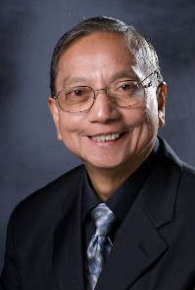The Mindanao State University was founded to hasten the integration of the Muslims and other cultural minorities to the national body politic; and to provide the necessary professional and technical manpower for the development of the MINSUPALA region.
The College of Engineering (COE) was established precisely for the said mandate particularly on the education and training of technical manpower. The curriculum of the COE then was the exact replica of the UP curriculum. The object was to develop quality education similar or even better than the UP’s.
In 1963, the University, in its brochure, was said to be offering engineering (CE, EE, ME, ChE) as degrees although there was not a single course yet offered in the majors. All then were the liberal arts courses in the sciences, natural and biological, required of the curriculum, and social sciences and languages. That same year, upon graduation from the UP, I came to the campus. I taught physics, from mechanics to atomic physics. I was in awe early then of the outstanding intelligence of students (mostly with honors, selected from the best of MINSUPALA). I thought I would stay for only a year or two, but with such impressive roll, I stayed long.
To say the least, and modestly at that, I was the COE in 1963, until later in the year, Professor Roman Ramos was hired as Dean. Ramos was a professor of mining engineering at the University of the Philippines (UP).
In the first semester of 1964, I still was the lone faculty under Dean Ramos. And so I handled the General Engineering courses like Mechanics (Statics and Dynamics), Technical Drawing, Economics; and Electrical Engineering. In the second semester, I think, the following instructors were hired: Erlinda Balolong, a graduate of the University of the Philippines, for ChE; Urso Peñalosa, from the Cebu Institute of Technology, for CE; and Errol Diaz from Silliman University, for ME.
We were one-man departments then with no one having a master’s degree. Imagine that. However, we had the best students that the nation could offer. We “helped” each other with the lessons. Most of the said students, years later, became the young faculty of the COE after their BS degrees from MSU, and MS degrees from the UP and other quality schools.
Alberto Villares, also from the UP, took over the deanship from Roman Ramos in 1965.
Major courses were offered sans instructional equipment; there were minimal in some. And so the University devised the so-called end-to-end system whereby students took two courses at a time for six weeks, to accelerate completion of curriculum in less semesters. For engineering, the students, after their course work, would spend a semester or two with the industries in Iligan to compensate for the lack instructional equipment.
I left the University for an East West Center grant to the University of Hawaii in 1966. I did not see the first and second batches of engineering graduates (Torres, Celis, Soliva, Mamoko et al), receive their diplomas, much to my melancholy. They were my students, we dug deep in the learning process together, devising ways and means to make do of whatever there was available. Years later, they became bosom colleagues in the profession.

